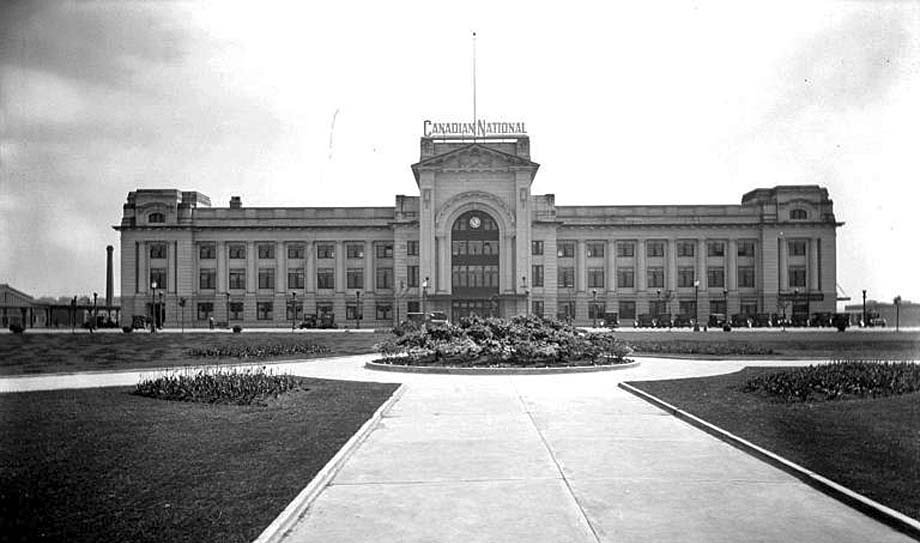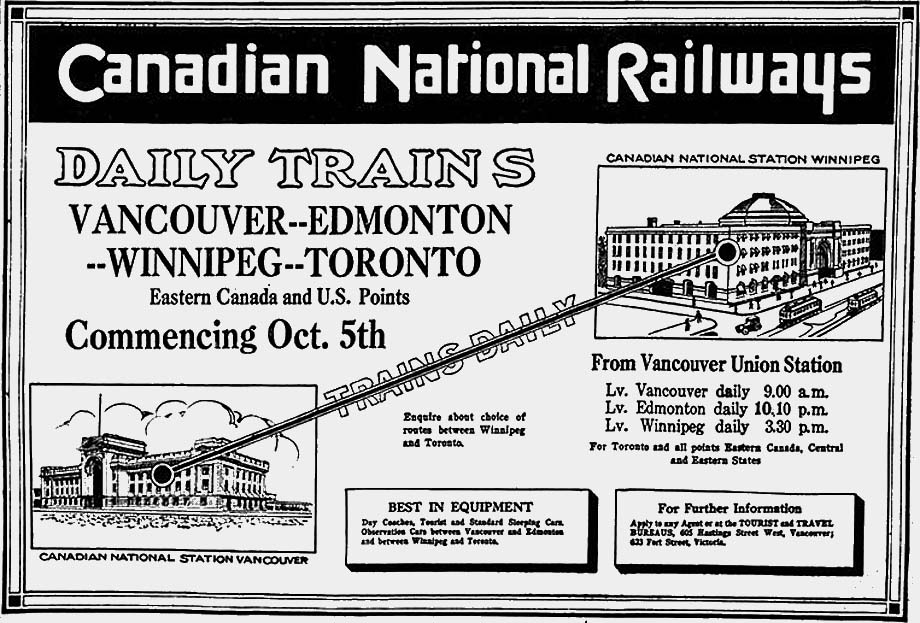
Vancouver British Columbia - In the early 1900s, Canadian Northern (CNoR) aspired to become Canada's second transcontinental railway.
In 1911, it announced it would build its terminus at Port Mann, on the Surrey side of today's Port Mann Bridge.
"The City on the Fraser is the City of Big Mills," read an 1 Apr 1912 ad for Port Mann in The Vancouver Sun.
"The City of Big Industries and a Big Shipping Trade. The Gateway of a Big Country. The Terminus of a Transcontinental Railway System. The "Child" of the Biggest Builders of the British Empire. This is why it appeals to big, brainy, red-blooded men."
The "Biggest Builders of the British Empire" in the ad were Sir Donald Mann and Sir William Mackenzie, the main backers of the railway.
But the city of Port Mann was never built, and the CNoR decided to build its terminus in Vancouver instead.
There wasn't a lot of vacant waterfront land to build a Vancouver terminus, however.
So the CNoR went to the City of Vancouver with a proposal to drain and fill in the eastern side of False Creek to create new land for railways.
False Creek used to fill up almost to Clark Drive at high tide.
The curve in the street where Prior turns into Venables in Strathcona was once part of the old shoreline.
Main Street had a bridge over the water.
Council said OK in October 1912, and voters overwhelmingly approved the plan in a plebiscite on 15 Mar 1913, with 5,032 voting for and 1,385 against.
CNoR entered into an agreement with the Great Northern railway from the U.S. to co-develop the site.
Great Northern opened the first depot on the reclaimed land, Union Station, on 1 Jun 1917.
The CNoR station took another two years.
The railway ran into financial difficulties with the advent of the First World War, when investment money dried up.
The federal government wound up taking over the railway in 1917 as Canadian National Railways (CNR).
When the Vancouver terminal finally opened on 1 Nov 1919 it was as a CNR station.
A Vancouver Sun story said the station was "designed along dignified classic lines, has a frontage of 321 feet, and a depth of 105 feet."
The exterior was granite and stone, and the interior featured marble walls, an ornamental plaster ceiling, and terrazzo floors.
All in all, the Sun noted the building was "fireproof and up to date in all respects."
There were 16 tracks leading into the station, with 1,200-foot-long platforms.
The building was designed by Pratt and Ross architects, and cost $1 million.
Mayor Robert Henry Otley Gale was on hand to greet the first train from Toronto, which was fully loaded with passengers and dignitaries when it arrived about 20:00 on 1 Nov 1919.
"It is gratifying to know that someone had foresight and vision enough in the years that have passed to realize what could be made of the old False Creek tidal flats," said Gale.
"This is a red-letter day, not only in the history of the Canadian National Railways, but in the history of the best city in the best province of the Dominion."
A banquet was then held in the new station, a multi-purpose venue that featured waiting rooms for both men and women, a dining room, lunch counter, barber shop, telegraph office, and ticket counters for both trains and steamships.
CNR promoted the new station with big ads for a month before the official opening.

The ads are confusing, it says there were daily trains between Vancouver, Edmonton, Winnipeg, and Toronto commencing 5 Oct 1919.
But the newspaper stories say the first trains began on 1 Nov 1919.
CNR did become Canada's second transcontinental railway, serving a northern route across Western Canada (Jasper, Edmonton, Saskatoon) while the Canadian Pacific Railway handled the southern route (Banff, Calgary, Regina).
But passenger rail declined with the advent of air travel, and CN got out of the passenger service in 1977, when the federally owned VIA Rail took over its lines.
Canadian Pacific turned over its passenger service to VIA in Octtober 1978.
The Canadian National station was renamed Pacific Central in 1993.
It still operates as a passenger terminal for VIA Rail and Amtrak.
Great Northern's Union Station next door was torn down in 1965.
John Mackie.
(likely no image with original article)
(usually because it's been seen before)
provisions in Section 29 of the
Canadian Copyright Modernization Act.
